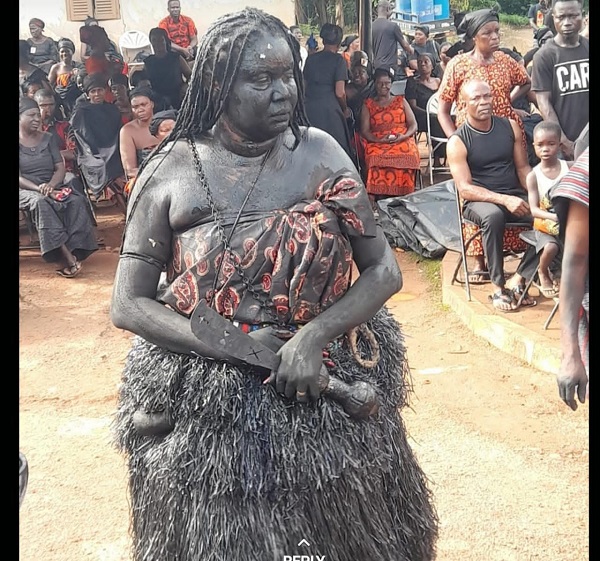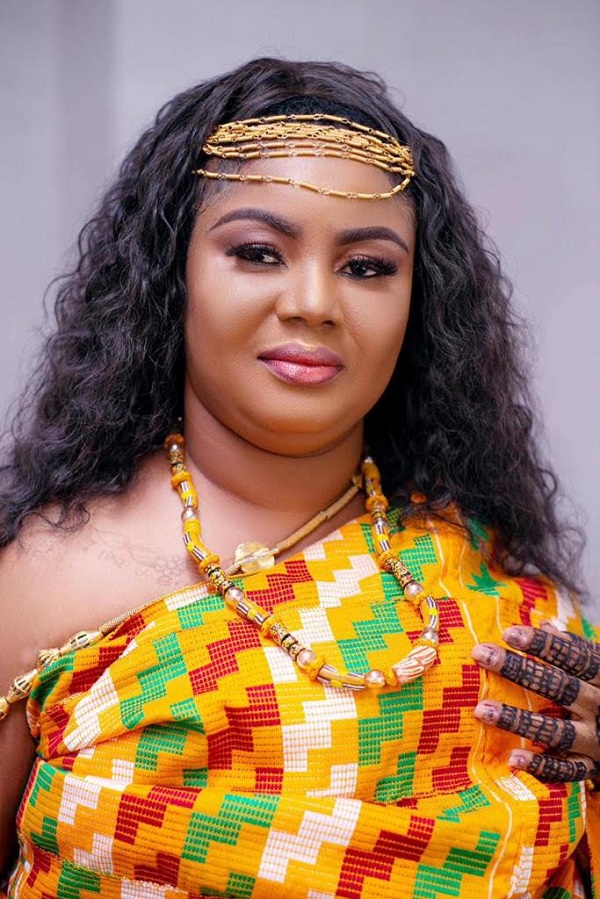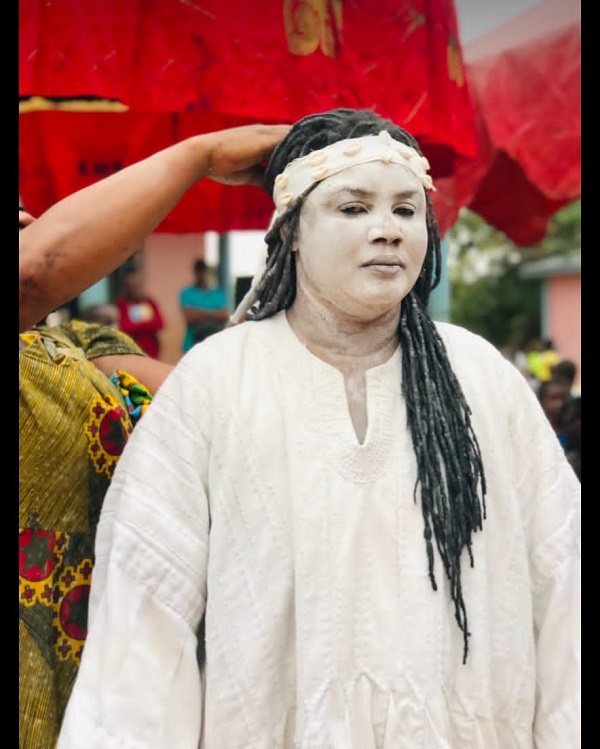The Ghanaian Perspective: Opinion Articles on Current Issues

Conversations with traditional priestesses
In the past, it was uncommon to spot a traditional priestess, locally known as “Okomfo baa”, in a trendy apparel.
They were usually dressed in plain white cloth, cowrie shells and held a horsetail (Bodua) believed to have some spiritual powers.
Their bodies were sometimes printed with different designs from white clay (hyerew). During ceremonies, these features were more pronounced.
This trend has changed. Some of the traditional priestesses have not only embraced modernity but now adorned themselves with makeup and fashionable clothing.
According to Nana Akosua,dressing fashionably was her own
way of blending into the modern era.
Some traditional priestesses, in an interview with The Mirror, said their fashionable appearance were their own ways of redefining beauty to make them more approachable, so that members of their community would not shy away from them.
Some said they appeared in their traditional outfit only when they were on duty at the shrine.
The interviews were held in Adansi Apagya, Adansi Fomena, Pipiiso and Bekwai in the Ashanti Region to find out their journey into the spiritual realms.

Advertisement
Nana Akosua Owusua in one of her ceremonial apparel
Shrine
In the various communities, this reporter observed that some of the shrines were empty, though they still had their sign posts at the various junctions where they were located.
Others
Some were locked and occupied by either a traditional priest or priestess. Some residents at Adansi Apagya described the shrine there as a traditional sacred place known locally as “abosomfie”.
The Mirror observed that some of these shrines had an interesting architecture and inside was a collection of various sizes of cutlasses, old drums, fertility dolls, traditional stools, animal skin, bones, kola nuts and gun.
Although some of the shrines were near a river, there were those situated in family homes where worshippers walked in and were directed to sit on a bench and wait for service.
This reporter realised that consulting the priest or priestess was similar to what went on in hospitals, where patients entered the consulting rooms one at a time.
In Adansi Fomena, a priestess with a male name, Nana Asare, who had served one of the oldest priestesses in the town, the late Nana Yetumi, said some of the shrines were locked because after the death and burial of the occupants, their children refused to take up the mantle.

Nana Akosua loves to put on makeup
She was pleased with the appearance of the current generation of priestesses, explaining that in their days, it was difficult interacting with people publicly, especially children, because their appearance was scary.
She said: “As a komfo, you walk barefooted. And when you are serving at the shrine, your headgear alone makes you look fearful to the public”. She disclosed that her grandmother, who served at the shrine, ushered her in at a tender age as her replacement.
At Bekwai Bogyaa Besease, 34-year old Okomfo baa, Nana Akosua Owusua, who had been in the business for over a decade, said her appearance was her own way of blending into the modern
era.
Apart from dressing fashionably, she said she also took part in communal labour, honoured church harvest invitations, weddings, naming ceremonies and other events.
Asked how she became an okomfo, she explained that even before her mother thought of getting pregnant, she received a prophecy in church that she would give birth to a traditional priest.
She said her mother took the prophecy lightly and did not do anything about it . “So, when l was born, growing up, the signs were not showing. When l got to class four, around the age of about eight or 10, I started getting possessed by the gods,” she claimed.

Okomfo baa's assistant, Ataa Panyin
“In Junior High School (JHS), Form two, l had to quit school because when l get possessed, l could take the cane from teachers and whip them. It was difficult for them to take the cane from me because I became so strong. Very strong. You can’t try me. So I stopped attending school,” she explained.
Sharing her journey and daily activities, Okomfo Nana Akosua said at age 18, her family took her to akom tete3 ( Okomfo training school) at Bomsu in the Ashanti Region, where she successfully graduated after two years.
According to her, her graduation was a proud moment for her as she gained a lot from learning African traditions, granting her powers to practice independently as a traditional priest.
The training school, she said, was like taking an apprenticeship in dressmaking, hairdressing or studying for a two-year diploma course.
Her visiting days at the shrine were on Mondays, Wednesdays and Sundays. All it took for one to access the powerful apay3(prayers) at her shrine were six eggs.
“The six eggs are for the gods. They will then tell you why you are there without you telling us. The gods will let you know what to do to end your misfortunes. You are now required to make a pledge to the gods on what you will offer when your problems are solved. If you refuse to honour, the gods will make you sick till you bring the thanksgiving,” she explained.

Nana Akosua has successfully graduated from Okomfo training school
at Bomsu in the Ashanti Region.
Challenge
On her challenges at the shrine, she said some Accra pastors were her biggest challenge, because they always refused to honour their promise after they got what they wanted from the gods.
Okomfo Nana Akosua said she had made peace with herself and could not serve two masters by going to church and serving at the shrine at the same time.




